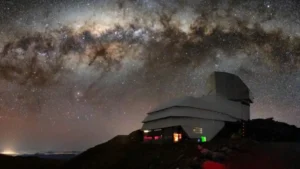A new study claims that 3.48 billion-year-old fossils in Western Australia are among the oldest signs of life on the planet. And how scientists confirmed that the fossils are fossils and not just rocks could help in the future search for extraterrestrial life.
The fossils in question are stromatolites. They’re layers of rock formed by the excretions of photosynthetic microbes that lived billions of years ago in shallow, nutrient-rich lagoons.
Whether the stromatolites in Western Australia’s Dresser Formation were fossils was formerly a matter of debate. Eons of aging and exposure had wiped away all traces of organic matter, reported Live Science. Some researchers argued that the formations were simply geologic in nature.
But paleontologists at the Natural History Museum in London cracked the code with a combination of high-resolution 2D and 3D imaging techniques.
This is the oldest evidence of #LifeOnEarth dating to 3.48 BILLION years ago🤯
Scientists have been looking at rocks from 🇦🇺 for evidence of life, in the hope that the same methods can be applied to rocks from #Mars.
Find out how we might detect ancient life on Mars (1/4)🧵 pic.twitter.com/QG5SplaORT
— Natural History Museum (@NHM_London) November 11, 2022
“Although our samples no longer contain microfossils or organic materials, they nonetheless have many characteristic structures that [indicate] a biological origin,” Dr. Keyron HIckman-Lewis said in a statement to the Natural History Museum.
“Imaging these structures with high-resolution techniques allows us to build a compelling case for how they might have formed due to the action of life,” she went on.
Exploring life on other planets
The microstructures resemble small domes and formed as the result of photosynthesis. The team also observed column-like structures present in the few, exceedingly rare modern-day stromatolites.

A living stromatolite structure at Lake Thetis, Cervantes, Western Australia. Photo: Shutterstock
Hickman-Lewis maintains that the techniques could help investigate the possibility of life on other planets.
“The deep iron-rich weathering profile of the Dresser stromatolites makes them pertinent analogs for potential microbialites…on Mars,” she wrote in the abstract to her paper.
The characteristics of the Dresser stromatolites — notably iron-rich soil and heavy, ancient weathering — make them pretty similar to the surface of Mars. That could come in handy as Mars exploration continues.






